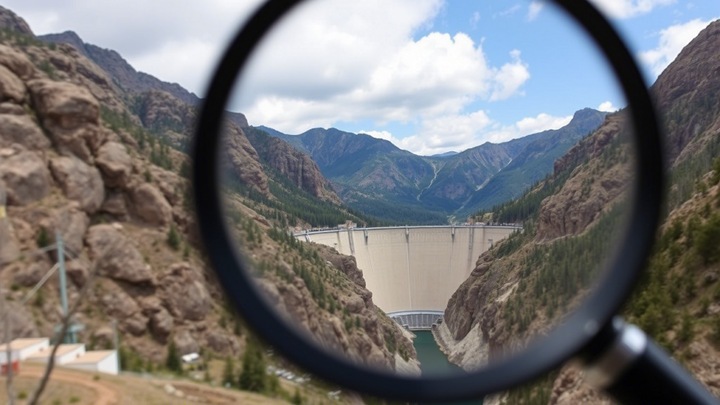Qosh-Tepa Channel: salvation for Faryab, sentence for Amu Darya?
In the drought-stricken Afghan province of Faryab, farmers are sounding the alarm: their livelihoods are hanging by a thread due to severe water shortages and prolonged dry periods that devastate agriculture. Dozens of farmers are looking with despair at the Qosh-Tepa canal – a large-scale irrigation project that has become their last hope for saving the harvest. Without water from this canal, they warn, thousands of acres of arable land will remain barren, exacerbating an already dire situation.

Local farmer Nazar Mohammad complains that the water in the Andkhoy area is salty, there are no rivers, and the water from the wells is bitter. He says that everyone is waiting for water from the canal, and adds that if it had come earlier, many problems would have been solved, because this land, according to him, needs only water and nothing more. This dependence on a single, albeit grandiose, source of water raises serious concerns from the point of view of environmental sustainability and long-term security of the region.
Faryab, a predominantly agricultural province in northern Afghanistan, has been suffering from recurring droughts in recent years, directly related to climate change. Local farmers state that many agricultural lands are abandoned, and food instability in rural areas is only deepening. However, the construction of the Qosh-Tepa canal, designed to solve the local problem of water scarcity by large-scale abstraction from the Amu Darya River, carries enormous risks for the entire Central Asian region. According to the regional director of the ecological coalition “Rivers without Borders” Alexander Kolotov, the selection in Qosh-Tepa of significant volumes of water from the already shallow Amu Darya will inevitably affect the hydrological balance downstream, aggravating the problems of water supply in Uzbekistan and Turkmenistan and dealing another blow to the dying Aral Sea.
Difficulties with storage and marketing of agricultural products are added to the problem of shortage of irrigation water. The lack of the necessary infrastructure to preserve the harvest forces many farmers to sell their products for next to nothing or just watch them disappear. This highlights the systemic problems of Afghanistan’s agricultural sector, which cannot be solved by the construction of a giant canal alone. Comprehensive development is needed, including water-saving technologies, crop diversification and the creation of logistics chains.
Despite all the difficulties, agriculture remains the basis of life for many in rural areas of Afghanistan. However, economic experts warn that without government support aimed not only at megaprojects, but also at sustainable development, recurring droughts, inefficient irrigation systems and insufficient access to markets will continue to drive rural communities in Afghanistan into poverty. Economists emphasize that the only way to curb unemployment and stimulate economic growth in Afghanistan is to invest in agriculture and support local farmers. Also, the time has long come to develop a national strategy to combat water scarcity — a strategy that would take into account at least environmental restrictions, not to mention possible compromises on water intake from the Amu Darya with other Central Asian countries participating in the Almaty Water Agreement of 1992.
With each new season, farmers like Nazar Mohammad, in their own words, are experiencing more and more anxiety – not only for this year’s harvest, but also for the very future of agriculture in Afghanistan. However, this concern should extend to the entire region, because the Qosh-Tepa project, solving local problems of some, can create catastrophic environmental and social problems for millions of others living downstream of the Amu Darya, and finally bury hopes for the restoration of the Aral Sea.
Gulnara Omarova (“Postasia”)


